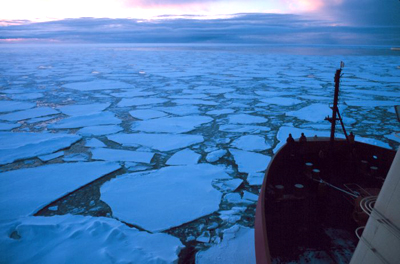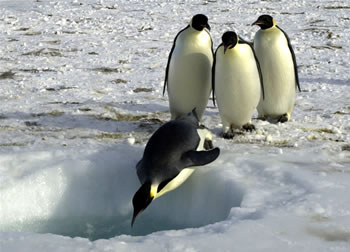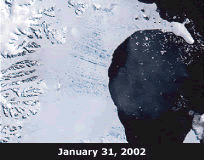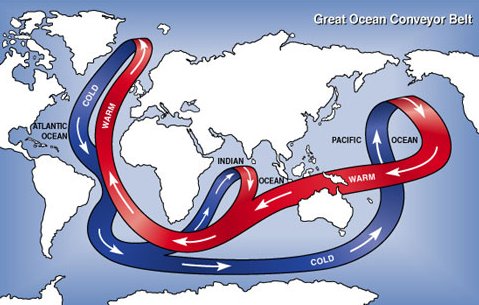Sunset over sea ice off the coast of Antarctica captured from the Nathaniel B. Palmer, an NSF research icebreaker ship, during an Antarctic oceanography research cruise.
Click on image for full size
NOAA Corp Collection, Photographer Michael Van Woert
The Southern Ocean
The Southern Ocean is a bit different. Many mapmakers do not even recognize it as an ocean. The Southern Ocean (sometimes known as the Antarctic Ocean or South Polar Ocean) surrounds Antarctica in the South Polar Region, extending to 60°S latitude.
In general, the boundaries of any ocean are usually the surrounding continents. For example, the Atlantic Ocean is bound by the North American and European continents in the north and the South American and African continents in the south. But the Southern Ocean does not have continents that define its boundaries.
So what makes the Southern Ocean an ocean?
According to the International Hydrographic Organization (IHO), because of its distinct circulation pattern, the waters of the Southern Ocean are somewhat separated from other oceans even without continents to form borders. The Antarctic Circumpolar Current is the strong ocean current that circles eastward around Antarctica. Because of this ocean circulation pattern, the seawater in the Southern Ocean is colder. The colder and isolated water supports a unique marine ecosystem in the Antarctic.
You might also be interested in:

Antarctica is unique. It is the coldest, windiest, and driest continent on Earth. The land is barren and mostly covered with a thick sheet of ice. Antarctica is almost entirely south of the Antarctic Circle
...more
What Will You Find There? South of the Antarctic Circle (at 66.5°S latitude) you will find the continent of Antarctica surrounded by the Southern Ocean, the geographic South Pole and the magnetic South
...more
The water at the ocean surface is moved primarily by winds that blow in certain patterns because of the Earth’s spin and the Coriolis Effect. Winds are able to move the top 400 meters of the ocean creating
...more
There are two oceans in Earth's polar regions. The Arctic Ocean is in the north polar region. The Southern Ocean is in the south polar region. The oceans that are in the polar regions are a bit different
...more
All sorts of living things call Earth’s polar regions home – from tiny lichens encrusting the rocky landscapes of the Arctic tundra to huge blue whales swimming through the frigid waters of the Southern
...more
The Antarctic Peninsula, the part of Antarctica furthest from the South Pole, has been warming rapidly, five times faster than the global average. Since 1945, the Antarctic Peninsula has warmed about
...more
The world has several oceans, the Pacific, the Atlantic, the Indian, the Arctic, and the Southern Ocean. While we have different names for them, they are not really separate. There are not walls between
...more













